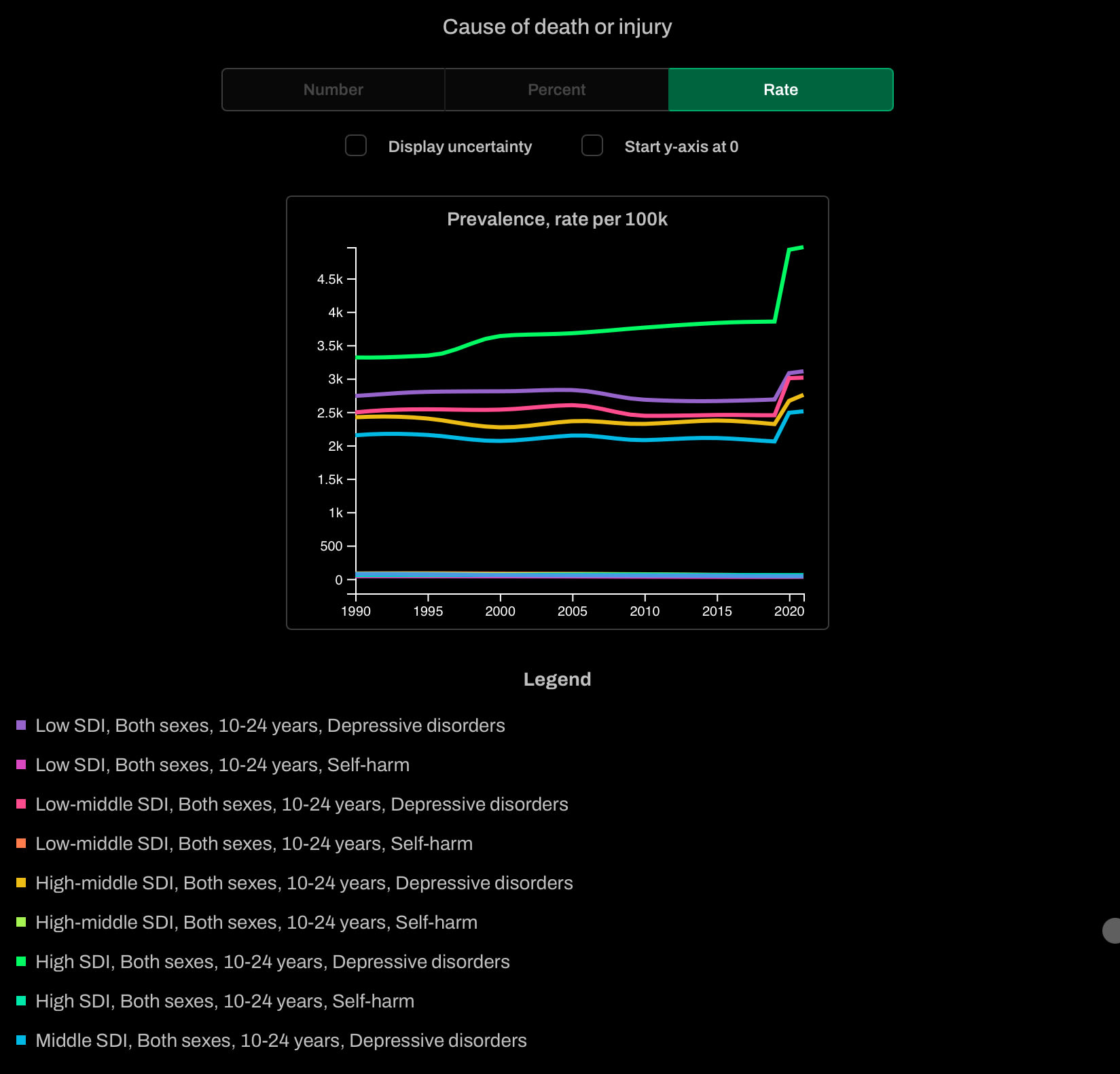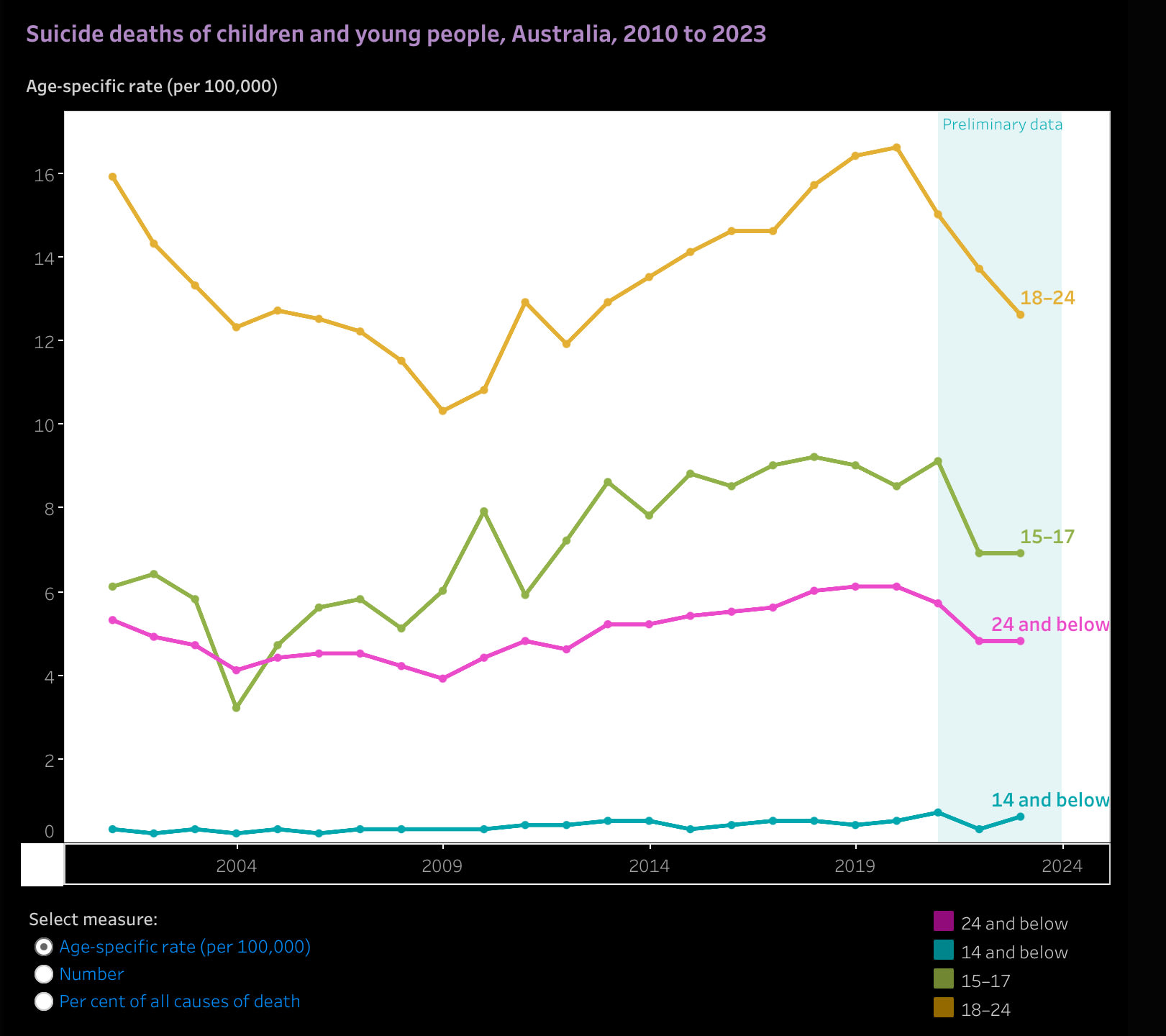12
Reactions
3 Answers sorted by
It's fair to say that the evidence is mixed at the moment. Jonathan Haidt's The Anxious Generation has captured a lot of attention, but many researchers dispute his arguments. This episode of the Freakonomics podcast provides a balanced perspective with voices from both sides of the debate.
There are many competing theories for the decline in youth wellbeing in Western countries (trends in other parts of the world are different), but they're mostly based on correlational evidence; causal evidence is weak and limited.
Some studies I recommend are:
“The Declining Mental Health Of The Young And The Global Disappearance Of The Hump Shape In Age In Unhappiness,” by David G. Blanchflower, Alex Bryson, and Xiaowei Xu (NBER Working Paper, 2024).
“Further Evidence on the Global Decline in the Mental Health of the Young,” by David G. Blanchflower, Alex Bryson, Anthony Lepinteur, and Alan Piper (NBER Working Paper, 2024).
“To What Extent are Trends in Teen Mental Health Driven by Changes in Reporting?” by Adriana Corredor-Waldron and Janet Currie (Journal of Human Resources, 2024).
“Global Well-Being and Mental Health in the Internet Age,” by Matti Vuorre and Andrew K. Przybylski (Clinical Psychological Science, 2023).
“Are Mental Health Awareness Efforts Contributing to the Rise in Reported Mental Health Problems? A Call to Test the Prevalence Inflation Hypothesis,” by Lucy Foulkes and Jack L. Andrews (New Ideas in Psychology, 2023).
“The Association Between Adolescent Well-Being and Digital Technology Use,” by Amy Orben and Andrew K. Przybylski (Nature Human Behaviour, 2019).
Social Media and Adolescent Health (Consensus Study Report)
What do we know about mental health and the internet in young people? (MQ Mental Health Research)
I don’t have a great sense of this issue specifically, but the first place I go looking to find the outside view on something like this is often the Global Burden of Disease study, which has been estimating disease prevalence since the 90s.
This chart displays the prevalence per 100,000 people of depressive disorders and self-harm injuries/deaths since 1900, among 10–24 year-olds, split by SDI groups. I think there are a lot of good reasons to be skeptical of GBD depression estimates, but data from high-income countries has been historically measured reliably since the 2010s, from which a meaningful increase due to the internet or smartphones would present itself.
My country, Australia, also keeps good track of suicide rates. They look like this over the internet era:
I would see the variation here as relatively random. Overall, I highly trust the GBD and its component data sources. So for me to update my beliefs, I would first want to understand why these high-level indicators are wrong or otherwise obscuring the real problem.
P.S. I’ll say one thing that I’ve found is a useful litmus test for whenever you see charts like this—keep an eye on the axes. A lot of ‘public intellectual’ types tend to post charts that cut the y-axis off above zero (inflating the relative size of changes), or the x-axis after the 90s (rates of depression and suicide appear to have changed more significantly over 1990–2010 than from 2010–2020, in ways that would drown out any proposed increase if included), or before 2020 (COVID-19 bumps tend to put modest increases over the 2010s in perspective).
While not a study per se, I found the Huberman Lab podcast episode ‘How Smartphones & Social Media Impact Mental Health’ very informative. (It’s two and a half hours long, mostly about children and teenagers, and references the study(ies) it draws from, IIRC.)



Just skimmed so far but does this mean there hasn't been a single RCT on any of this stuff? Are governments blocking this from happening?